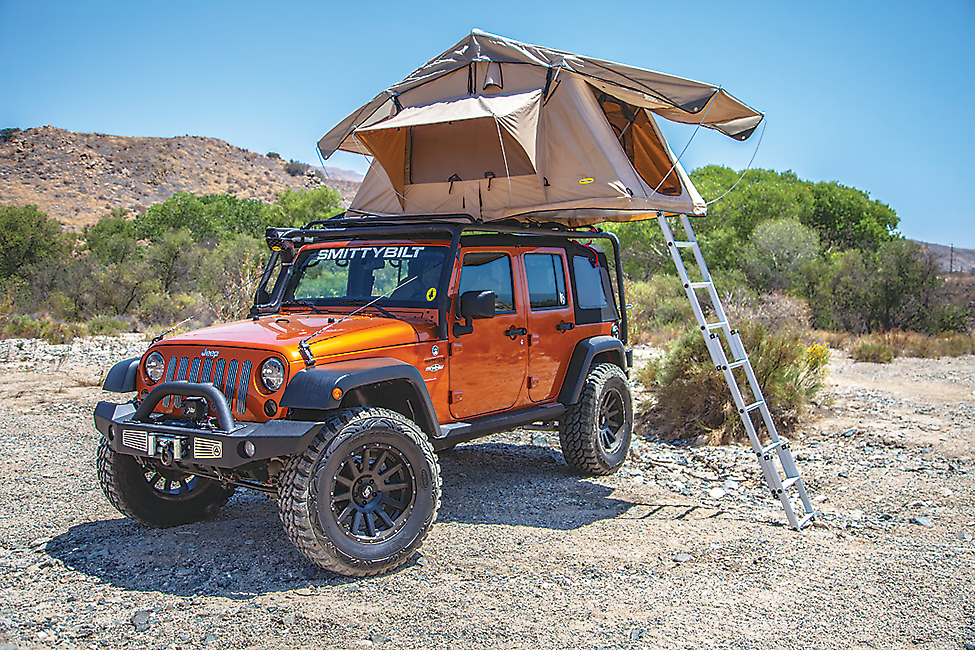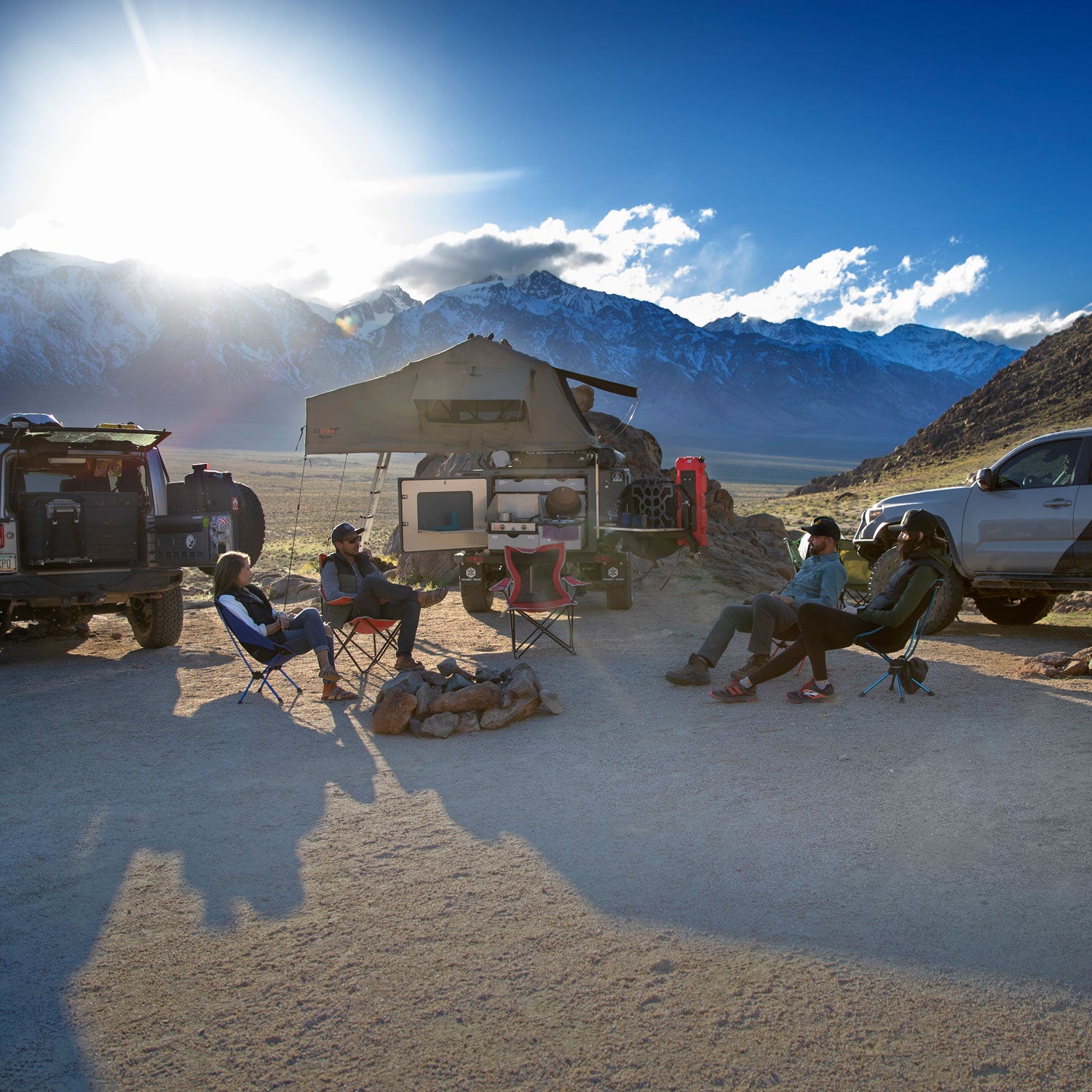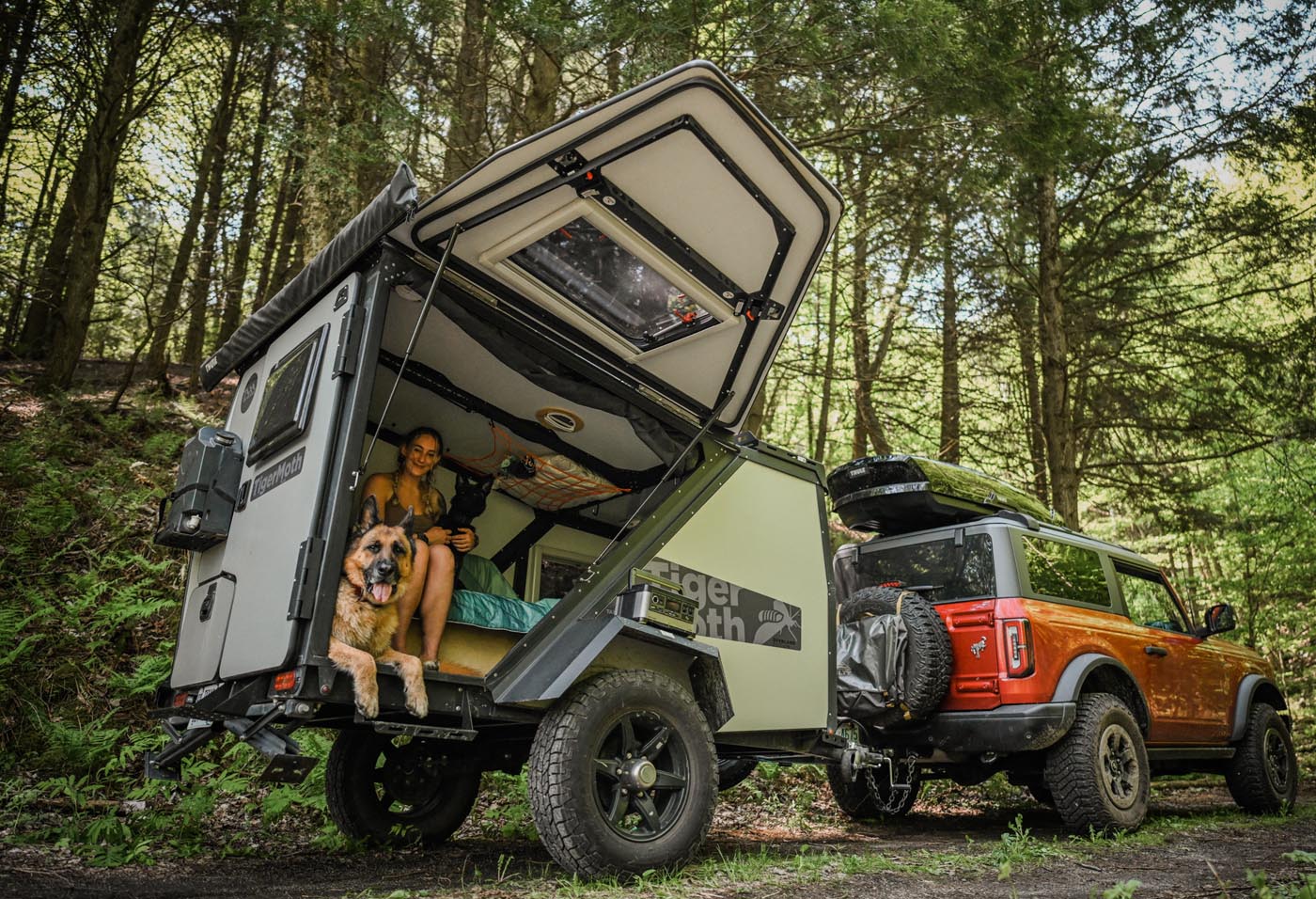Overlanding Trucks For Sale: Your Gateway to Adventure pickup.truckstrend.com
The call of the wild, the allure of remote landscapes, and the promise of self-reliant travel have ignited a passion for overlanding in adventurers worldwide. Overlanding isn’t just about off-roading; it’s about the journey itself – exploring distant lands, experiencing diverse cultures, and becoming self-sufficient in challenging environments. At the heart of this pursuit lies the overlanding truck: a purpose-built or highly modified vehicle designed to carry you, your gear, and your home, safely and reliably, far off the beaten path.
For many, the dream begins with finding the perfect rig. The market for "Overlanding Trucks For Sale" is diverse and dynamic, ranging from meticulously crafted, turnkey expedition vehicles to robust, budget-friendly platforms ripe for customization. This comprehensive guide will navigate the complexities of acquiring an overlanding truck, offering insights, practical advice, and essential considerations to help you embark on your ultimate adventure.
Overlanding Trucks For Sale: Your Gateway to Adventure
What Makes an Overlanding Truck? Beyond the Pavement Pounder
An overlanding truck is fundamentally different from a standard pickup or an RV. While it may share a chassis with a commercial truck, its modifications are geared towards resilience, self-sufficiency, and remote travel. Key characteristics include:
- Robust 4×4 Drivetrain: Essential for tackling varied terrain, including mud, sand, rocks, and steep inclines. This includes low-range gearing, locking differentials, and robust axles.
- Enhanced Suspension: Designed to handle heavy loads (fuel, water, gear, living quarters) and absorb the punishment of corrugated roads and challenging trails, often involving lifted suspensions and heavy-duty shocks.
- Increased Fuel and Water Capacity: Extended range tanks for fuel and large potable water tanks are critical for long stretches between resupply points.
- Payload Capacity: The ability to carry significant weight without compromising safety or performance is paramount. This includes the weight of the camper, gear, occupants, and supplies.
- Recovery Capabilities: Integrated winches, robust recovery points (front and rear), and the space for essential recovery gear like recovery boards and straps.
- Self-Sufficiency Systems: Auxiliary power (solar panels, dual battery systems, inverters), communication systems (satellite phones, ham radios), and provisions for cooking and sleeping onboard.
- Durability and Reliability: Components are chosen for their ability to withstand harsh conditions, and ease of repair in remote locations is often a consideration.

New vs. Used Overlanding Trucks: A Buyer’s Dilemma
The decision between purchasing a new or used overlanding truck is often dictated by budget, desired customization, and immediate availability.

New Overlanding Trucks: The Turnkey Dream
Pros:
- Warranty and Peace of Mind: New vehicles come with factory warranties, covering potential defects.
- Latest Technology: Modern engines, safety features, and infotainment systems.
- Customization from Factory: Some manufacturers and specialized builders offer tailored packages.
- No Prior Wear and Tear: You’re the first owner, so you know the vehicle’s history.

Cons:
- High Cost: Significant initial investment, especially for purpose-built expedition vehicles.
- Depreciation: New vehicles depreciate rapidly in their first few years.
- Lead Times: Custom builds can have long waiting periods.
- Less Proven: Some new models may not have a long track record for overlanding reliability.
Used Overlanding Trucks: Value and Experience
Pros:
- Significant Cost Savings: Used vehicles are considerably cheaper, allowing more budget for modifications or travel.
- Established Builds: Many used rigs come pre-modified with valuable overlanding equipment, saving time and money on installation.
- Immediate Availability: Often ready to hit the road with minimal fuss.
- Proven Reliability: Older models often have a known track record for durability.
Cons:
- Hidden Issues: Potential for undisclosed mechanical problems or wear and tear.
- Maintenance History: May be incomplete or poorly documented.
- Outdated Technology: Older vehicles might lack modern comforts or safety features.
- Wear and Tear: Components like suspension, tires, and interior might need replacement sooner.
Types of Overlanding Trucks: Finding Your Platform
The "best" overlanding truck is subjective, depending on your travel style, number of occupants, and terrain. Here’s a breakdown of common platforms:
- Mid-Size Pickups (e.g., Toyota Tacoma, Jeep Gladiator, Ford Ranger, Chevy Colorado):
- Pros: Excellent maneuverability on tight trails, good aftermarket support, decent fuel economy.
- Cons: Limited payload capacity for heavy builds, smaller living space.
- Full-Size Pickups (e.g., Ford F-Series, Ram, Chevy Silverado/GMC Sierra, Toyota Tundra):
- Pros: High payload capacity, spacious cabs, comfortable ride, powerful engines.
- Cons: Less nimble on narrow trails, higher fuel consumption, larger footprint.
- 4×4 Vans (e.g., Mercedes Sprinter 4×4, Ford Transit AWD, Quigley E-Series):
- Pros: Stand-up interior height, secure and enclosed living space, discreet appearance.
- Cons: Higher center of gravity, less ground clearance than trucks, limited off-road articulation in stock form.
- Light/Medium Duty Trucks (e.g., Fuso Canter 4×4, Isuzu NPS, Ram 5500):
- Pros: Massive payload capacity, extremely robust chassis, excellent base for large expedition campers.
- Cons: Very large and heavy, poor fuel economy, expensive to maintain, limited aftermarket support for some models.
- Purpose-Built Expedition Vehicles (e.g., EarthRoamer, Global Expedition Vehicles, SLRV):
- Pros: Engineered from the ground up for extreme overlanding, unparalleled luxury and self-sufficiency.
- Cons: Exorbitantly expensive, often too large for tighter trails or urban areas, specialized maintenance.
Key Considerations When Buying Your Overlanding Truck
Before diving into listings, define your needs and budget clearly.
- Budget: Not just the purchase price, but also modifications, insurance, maintenance, fuel, and ongoing travel expenses. Be realistic.
- Intended Use: Weekend warrior? Extended expeditions? Solo traveler or family? Will you be crossing international borders? This dictates vehicle size, capability, and self-sufficiency needs.
- Payload Capacity: Crucial! Every pound added (camper, water, fuel, gear, people) counts. Exceeding Gross Vehicle Weight Rating (GVWR) is unsafe and illegal.
- Mechanical Reliability & Parts Availability: Especially important for international travel. Toyota, Ford, and Chevy often have wider parts networks.
- Aftermarket Support & Customization Options: Popular platforms (Tacoma, F-Series, Sprinter) have vast aftermarket communities and parts.
- Comfort & Livability: Consider sleeping arrangements, cooking facilities, climate control, and storage. Your rig is your home on wheels.
- Vehicle Dimensions & Maneuverability: A larger vehicle might be comfortable but limit access to certain trails or urban areas.
- Insurance & Registration: Research costs and requirements, especially for heavily modified vehicles.
Where to Find Overlanding Trucks For Sale
The overlanding community is vibrant, and so are the marketplaces:
- Specialized Dealerships & Builders: Companies like EarthRoamer, GXV, and smaller custom builders offer new and sometimes used, high-end expedition vehicles.
- Online Marketplaces:
- Expedition Portal & Wander The West Forums: Dedicated classifieds for overlanding vehicles and gear. Highly recommended.
- Facebook Marketplace & Groups: Numerous overlanding-specific groups where rigs are bought and sold.
- Craigslist & eBay Motors: Local and regional listings, often requiring more discernment.
- Private Sellers: Often found through online forums or word-of-mouth. Can offer good deals, but require thorough due diligence.
- RV & Truck Dealerships: Sometimes have used 4×4 trucks or converted vans, but typically not purpose-built overlanding rigs.
- Auctions: Government surplus (GovPlanet), commercial, or public auctions can yield good deals, but "buyer beware" applies strongly.
Inspecting and Purchasing Your Overlanding Rig
Once you’ve found a potential candidate, a rigorous inspection process is vital.
- Pre-Purchase Inspection (PPI): Have a trusted, independent mechanic (ideally one familiar with 4x4s or diesels if applicable) perform a thorough inspection. This is non-negotiable.
- Overlanding-Specific Checks:
- Frame: Inspect for rust, cracks, or bends, especially near suspension mounts or welded modifications.
- Drivetrain: Check transfer case, differentials, axles for leaks or unusual noises. Engage 4×4 modes.
- Suspension: Look for worn bushings, bent components, or leaking shocks. Verify proper alignment and lift components.
- Tires: Check for even wear, proper size for the vehicle, and remaining tread.
- Electrical: Test all auxiliary systems (solar, inverter, fridge, lights). Check wiring quality, especially for aftermarket additions.
- Plumbing: Inspect water tanks, pumps, and lines for leaks or damage.
- Camper/Shell: Look for water intrusion, delamination, structural integrity, and proper sealing.
- Test Drive: Drive on varying terrain if possible. Listen for unusual noises, feel for vibrations, and test brakes and steering.
- Documentation: Verify title is clear, review maintenance records, and understand all modifications.
- Negotiation: Be prepared to negotiate based on your findings. Common red flags include extensive rust, frame damage, poor DIY wiring, and neglected maintenance.
Beyond the Purchase: Essential Upgrades & Maintenance
Buying the truck is just the first step. Most overlanding rigs require ongoing investment and diligent maintenance.
- Suspension Upgrade: Heavy-duty springs, shocks, and potentially a lift are often necessary to handle the increased weight and rough terrain.
- All-Terrain/Mud-Terrain Tires: Appropriate tires are the single most important modification for off-road capability.
- Recovery Gear: A winch, recovery boards, kinetic rope, shackles, and a high-lift jack are essential.
- Auxiliary Power: Solar panels, a dual battery system, and an inverter are crucial for powering accessories and appliances.
- Water & Fuel Storage: Additional capacity is key for extended trips.
- Communication: Satellite communicators (Garmin inReach, Starlink Roam), VHF/UHF radios, or CB radio for emergencies and staying connected.
- First Aid & Safety Equipment: Comprehensive medical kit, fire extinguisher, and emergency tools.
- Regular Maintenance: Adhere to manufacturer service intervals, and be proactive with fluid changes, filter replacements, and component checks.
Price Table: Representative Overlanding Truck Price Ranges
It’s impossible to list exact prices for "Overlanding Trucks For Sale" due to the vast variables (make, model, year, condition, modifications, mileage). However, this table provides estimated price ranges based on vehicle type and build level, offering a general guide.
| Vehicle Type | Build Level (Description) | Estimated Price Range (USD) | Key Features/Notes |
|---|---|---|---|
| Mid-Size Pickup | Entry-Level (Stock/Mild Mods) | $15,000 – $35,000 | Used, relatively stock 4×4 truck (Tacoma, Ranger, Colorado). May have basic lift, AT tires, roof rack. Good for beginners. |
| (e.g., Tacoma, Gladiator) | Mid-Tier (Equipped for Overlanding) | $35,000 – $70,000 | Used, significant upgrades: heavy-duty suspension, full armor (skid plates, bumpers), winch, dual battery, basic camper shell/topper with build-out. New entry-level models might be in this range. |
| High-End (Full Custom Build/New) | $70,000 – $120,000+ | Professionally built or meticulously customized used rigs, or new trucks with extensive, high-quality overlanding packages. Includes advanced power systems, robust sleeping solutions (pop-top campers, flatbed campers). | |
| Full-Size Pickup | Entry-Level (Stock/Mild Mods) | $20,000 – $45,000 | Used, stock or lightly modified 4×4 (F-150/250, Ram 1500/2500). Good payload potential. |
| (e.g., F-250, Ram 2500) | Mid-Tier (Equipped for Overlanding) | $45,000 – $90,000 | Used with significant upgrades: heavy-duty suspension, large fuel/water tanks, integrated slide-in camper or custom flatbed camper. New base models. |
| High-End (Full Custom Build/New) | $90,000 – $200,000+ | New or used with premium, robust flatbed campers, advanced power systems, air suspension, full off-grid capabilities. Popular for families or long-term travel. | |
| 4×4 Vans | Entry-Level (DIY Conversion Potential) | $25,000 – $60,000 | Used AWD/4×4 van (Sprinter, Transit) in stock or lightly converted form. Requires significant DIY work or professional build. |
| (e.g., Sprinter 4×4) | Mid-Tier (Partially/Professionally Converted) | $60,000 – $150,000 | Used, professionally converted vans or new vans with basic 4×4 conversions and interior build-outs. Good for couple’s travel. |
| High-End (Luxury/Full Custom Conversion) | $150,000 – $300,000+ | New, fully custom, luxury 4×4 van conversions with advanced systems, high-end finishes, and full off-grid capabilities. Often includes pop-tops for stand-up height. | |
| Light/Medium Duty Truck | Base Chassis (Used/New) | $40,000 – $100,000 | Used Fuso Canter, Isuzu NPS, or Ram 5500 chassis. Requires separate purchase and mounting of a large camper box. |
| (e.g., Fuso Canter) | Equipped (With Camper Box) | $100,000 – $300,000+ | Used chassis with a mounted expedition camper box (e.g., box from a reputable builder). Significant off-grid capability and living space. |
| Purpose-Built Expedition Vehicle | Premium (Turnkey, Luxury) | $300,000 – $1,000,000+ | New, custom-built vehicles from companies like EarthRoamer, Global Expedition Vehicles. Highest level of luxury, capability, and self-sufficiency. |
Note: These are general estimates. Prices can fluctuate significantly based on market demand, vehicle condition, mileage, specific modifications, and the reputation of the builder.
Frequently Asked Questions (FAQ) about Overlanding Trucks For Sale
Q1: What is the "best" truck for overlanding?
A1: There is no single "best" truck. It depends entirely on your budget, travel style, the terrain you plan to explore, the number of people traveling, and your desired level of comfort and self-sufficiency. Toyota Tacomas and Land Cruisers are popular for reliability and aftermarket support, while full-size trucks offer more payload.
Q2: How much should I expect to spend on an overlanding truck?
A2: As shown in the table, the price range is vast, from $15,000 for a used, mildly modified mid-size truck to over $1,000,000 for a luxury, purpose-built expedition vehicle. A realistic budget for a capable, well-equipped used rig often falls between $40,000 and $100,000.
Q3: Can I overland in my stock 4×4 truck?
A3: Absolutely! Many people start overlanding in their stock 4x4s. Focus on essential gear first (recovery equipment, good tires, basic camping setup) before investing in extensive modifications. Start with easier trails and work your way up.
Q4: What are the most essential modifications for an overlanding truck?
A4: After good tires, the most essential modifications are typically:
- Heavy-duty suspension: To handle the weight of gear and rough terrain.
- Recovery points and basic recovery gear: For getting unstuck.
- Auxiliary power: A dual battery system or solar setup for powering accessories.
- Improved lighting: For visibility in remote areas.
Q5: Is a diesel engine better than a gasoline engine for overlanding?
A5: Both have pros and cons. Diesel engines typically offer better fuel economy, more torque for heavy loads, and sometimes greater reliability in remote areas due to simpler mechanics (though modern diesels are complex). However, diesel fuel can be harder to find in some parts of the world, and diesel vehicles often have higher maintenance costs and more complex emissions systems. Gasoline engines are generally cheaper to buy and maintain, with wider fuel availability.
Q6: How important is payload capacity for an overlanding truck?
A6: Extremely important! Payload capacity (Gross Vehicle Weight Rating – GVWR) is often overlooked. It dictates how much weight you can safely carry, including passengers, fuel, water, gear, and any camper or living quarters. Overloading your vehicle is dangerous, stresses components, and can lead to costly breakdowns. Always know your truck’s GVWR and factor in every item you plan to carry.
Conclusion: Your Journey Begins Here
The pursuit of an overlanding truck is more than just a vehicle purchase; it’s an investment in a lifestyle of exploration, self-reliance, and unparalleled adventure. By understanding the diverse landscape of "Overlanding Trucks For Sale," considering your specific needs, and approaching the buying process with diligence, you can find the perfect rig to carry you to the far corners of the earth. Whether you opt for a budget-friendly used pickup or a custom-built expedition behemoth, remember that the true value lies not just in the vehicle itself, but in the unforgettable experiences it enables. Happy hunting, and may your journeys be epic!
